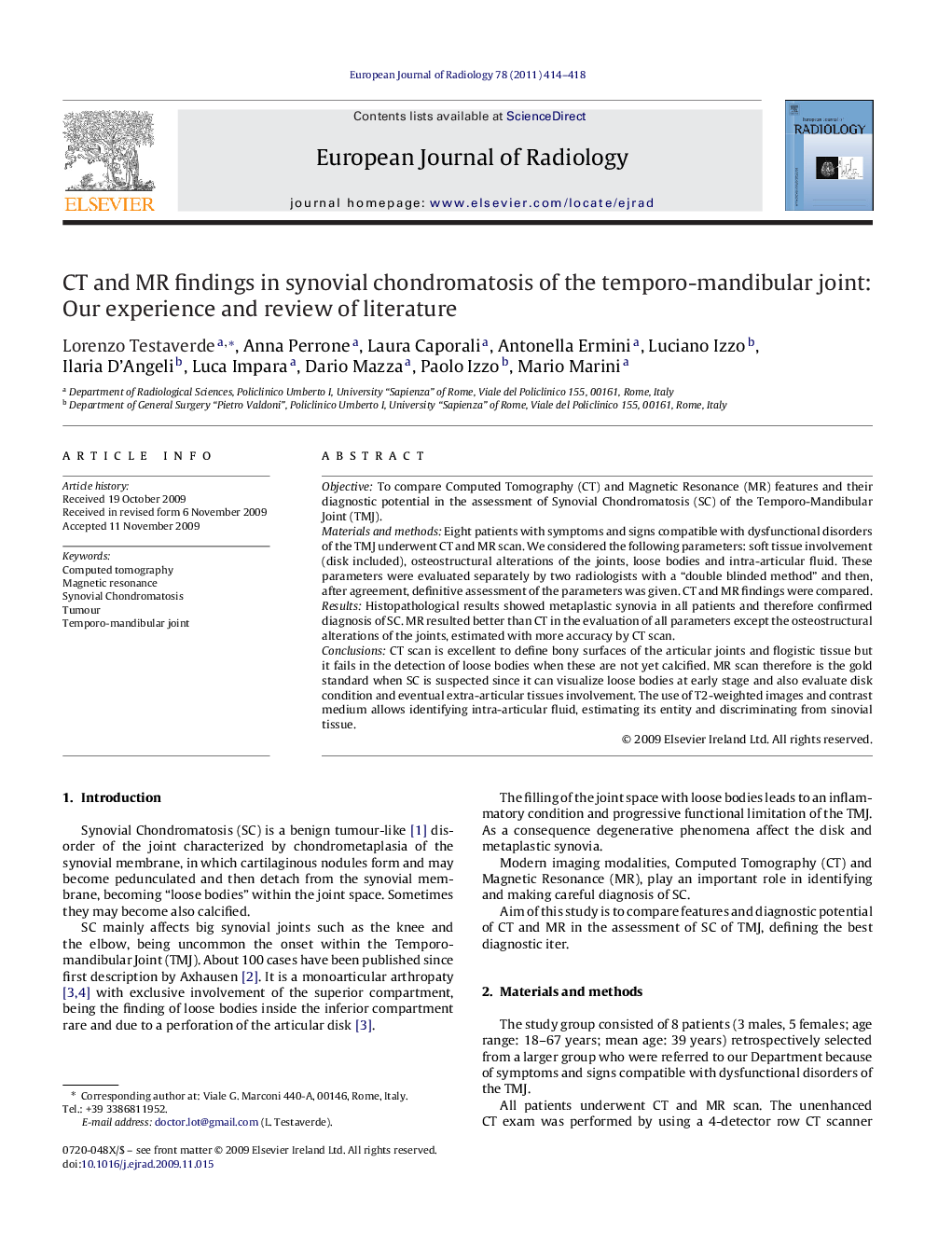| Article ID | Journal | Published Year | Pages | File Type |
|---|---|---|---|---|
| 4226327 | European Journal of Radiology | 2011 | 5 Pages |
ObjectiveTo compare Computed Tomography (CT) and Magnetic Resonance (MR) features and their diagnostic potential in the assessment of Synovial Chondromatosis (SC) of the Temporo-Mandibular Joint (TMJ).Materials and methodsEight patients with symptoms and signs compatible with dysfunctional disorders of the TMJ underwent CT and MR scan. We considered the following parameters: soft tissue involvement (disk included), osteostructural alterations of the joints, loose bodies and intra-articular fluid. These parameters were evaluated separately by two radiologists with a “double blinded method” and then, after agreement, definitive assessment of the parameters was given. CT and MR findings were compared.ResultsHistopathological results showed metaplastic synovia in all patients and therefore confirmed diagnosis of SC. MR resulted better than CT in the evaluation of all parameters except the osteostructural alterations of the joints, estimated with more accuracy by CT scan.ConclusionsCT scan is excellent to define bony surfaces of the articular joints and flogistic tissue but it fails in the detection of loose bodies when these are not yet calcified. MR scan therefore is the gold standard when SC is suspected since it can visualize loose bodies at early stage and also evaluate disk condition and eventual extra-articular tissues involvement. The use of T2-weighted images and contrast medium allows identifying intra-articular fluid, estimating its entity and discriminating from sinovial tissue.
